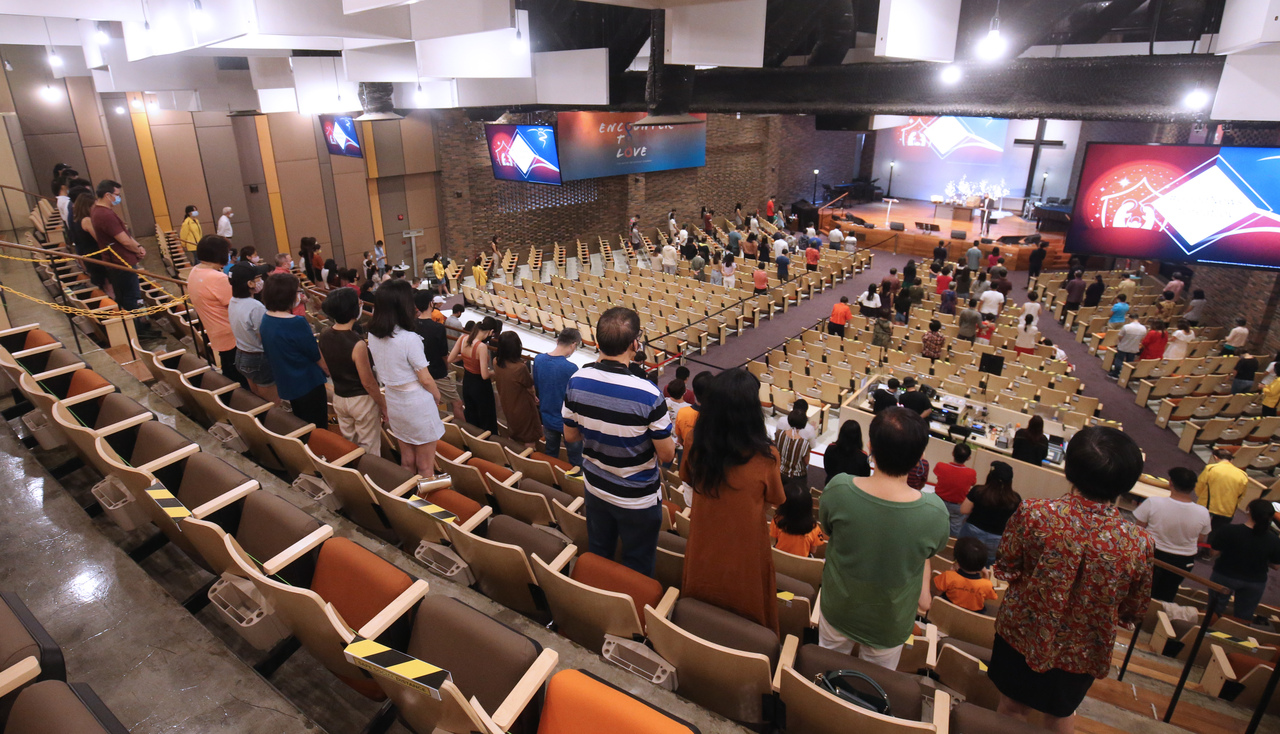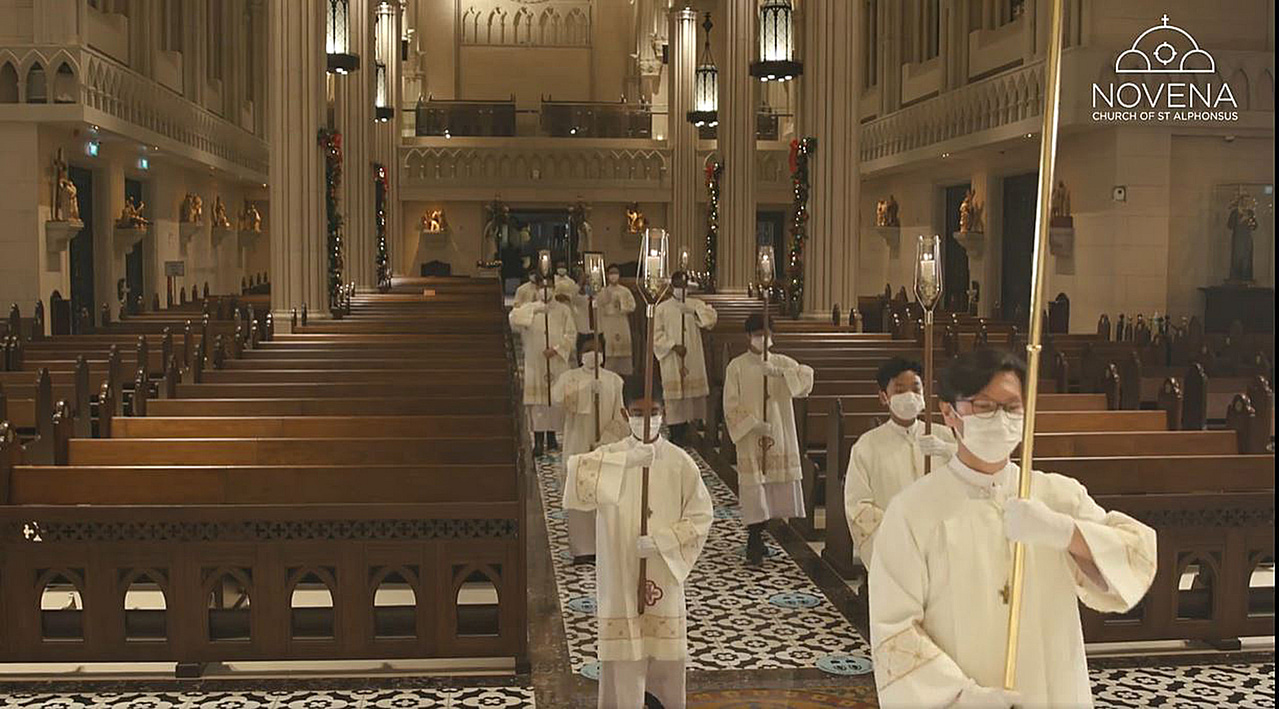Guidelines announced for religious services in Singapore's phase 3 reopening
Sign up now: Get ST's newsletters delivered to your inbox

At present, religious organisations can hold congregational and other worship services for up to 100 people.
PHOTO: LIANHE ZAOBAO
Follow topic:
SINGAPORE - Details of how religious services can be conducted safely as the maximum size of congregants is increased to 250 in phase three, which starts on Monday (Dec 28), were announced by the Ministry of Culture, Community and Youth on Sunday.
At present, religious organisations can hold congregational and other worship services for up to 100 people.
From Monday, live performance elements for congregational and other worship services, as well as religious rites, will be permitted.
TraceTogether-only SafeEntry will be made mandatory for places of worship and other public premises by early next year, after everyone has had the chance to collect the TraceTogether token.
Religious organisations must prepare to accept check-ins by the TraceTogether app or token, said MCCY.
For congregational services, worshippers have to be segregated into zones each holding a maximum of 50 people.
Zones must be completely separated from one another through either a wall-to-wall partition that is at least 1.8m high, or a space of at least 3m that is demarcated by continuous physical barriers such as ropes.
Entrance and exit timings must also be staggered so that worshippers from different zones do not mix with one another, said MCCY.
"Religious organisations must also take reasonable steps to ensure that worshippers do not cross the physical barrier, where applicable, or enter another zone that they are not assigned to."
It added that they must keep worship services as short as possible, and that everyone present, except children below six, must wear a mask at all times.
"There must be no reception or mingling between worshippers, before, during or after each worship service," it said.
Besides the larger services, up to 150 additional people can participate in other permitted religious activities - such as religious rites and classes - on the premises at the same time. This is an increase from the current limit of 100 people.
These gatherings must not exceed 50 people per group and need to have safe management measures in place.
"Religious organisations should consider reducing other concurrent activities when congregational and other worship services are ongoing, so that there is a smaller total number of people on the premises at any one time, which will help to minimise the risk of large clusters from forming," said MCCY.
For the live performance elements, up to 10 people involved in conducting the worship service are allowed to remove their masks at a time, of whom up to five people can remove their masks to sing.
They should only do so when they need to carry out their duties, and there must be a distance of at least 3m between the people involved in the live performance elements and the worshippers.
Besides those allowed to remove their masks for singing, other worshippers are not allowed to sing during the worship service.
Religious rites may also involve live performance elements, with safe management measures in place.

Christmas Midnight Mass at Novena Church on Dec 24, 2020.
PHOTO: NOVENA CHURCH/FACEBOOK
Worshippers should not share common items such as holy books, offertory baskets and prayer mats, as this increases the risk of Covid-19 transmission, said MCCY.
"Religious organisations are encouraged to continue supporting the religious needs of their communities via remote means such as recording and broadcast of religious services and prayers," said MCCY.
These organisations need to submit their safe management plans, including plans for manpower deployment, at least three days before commencing phase three activities. They can go here for more information.
They may only continue with religious activities permitted under phase two parameters if they have not submitted their plans after Monday.

